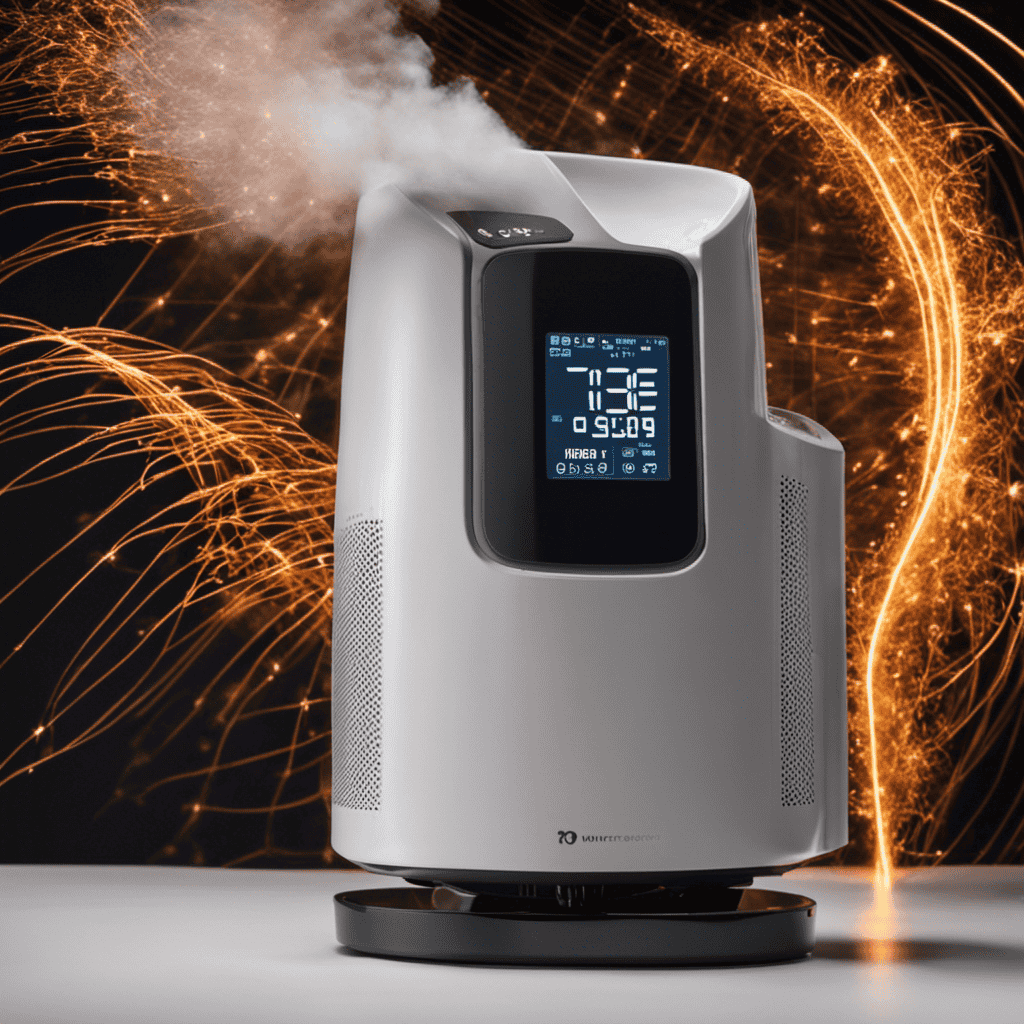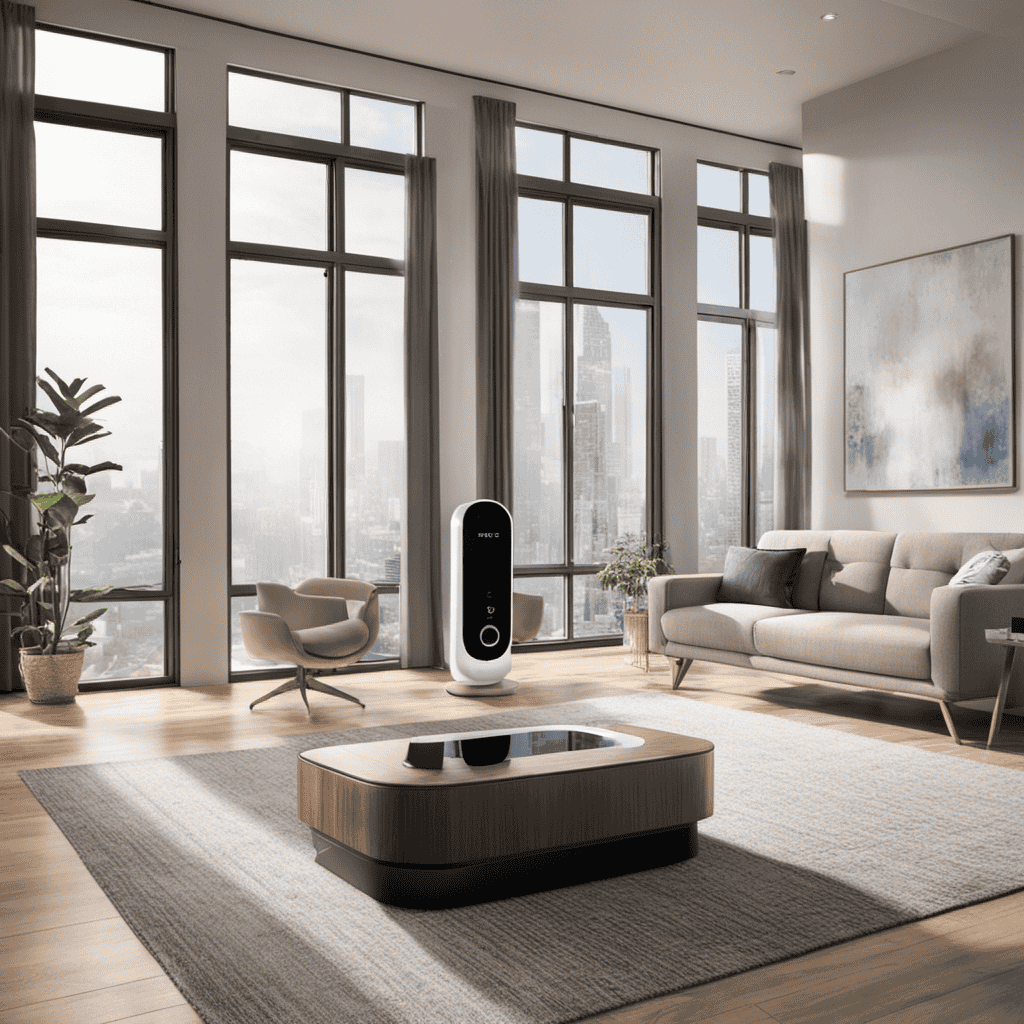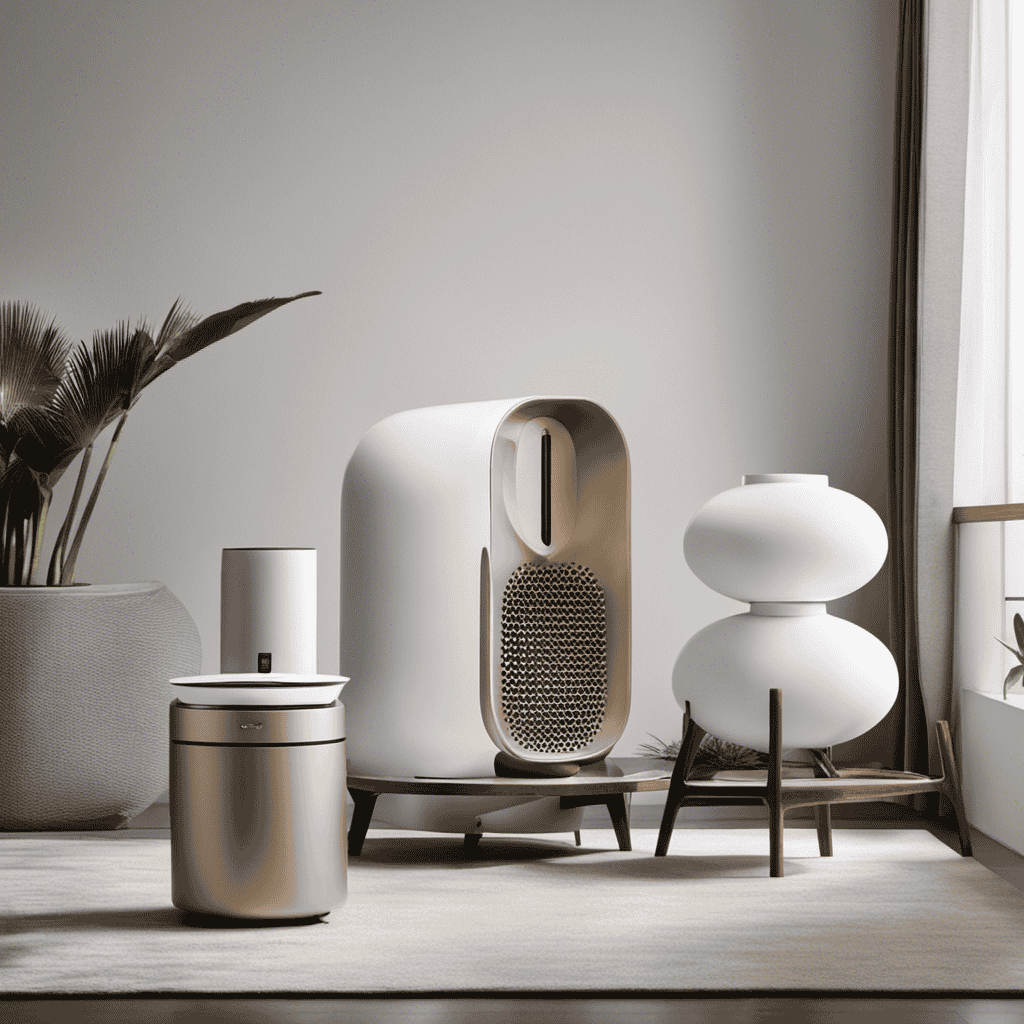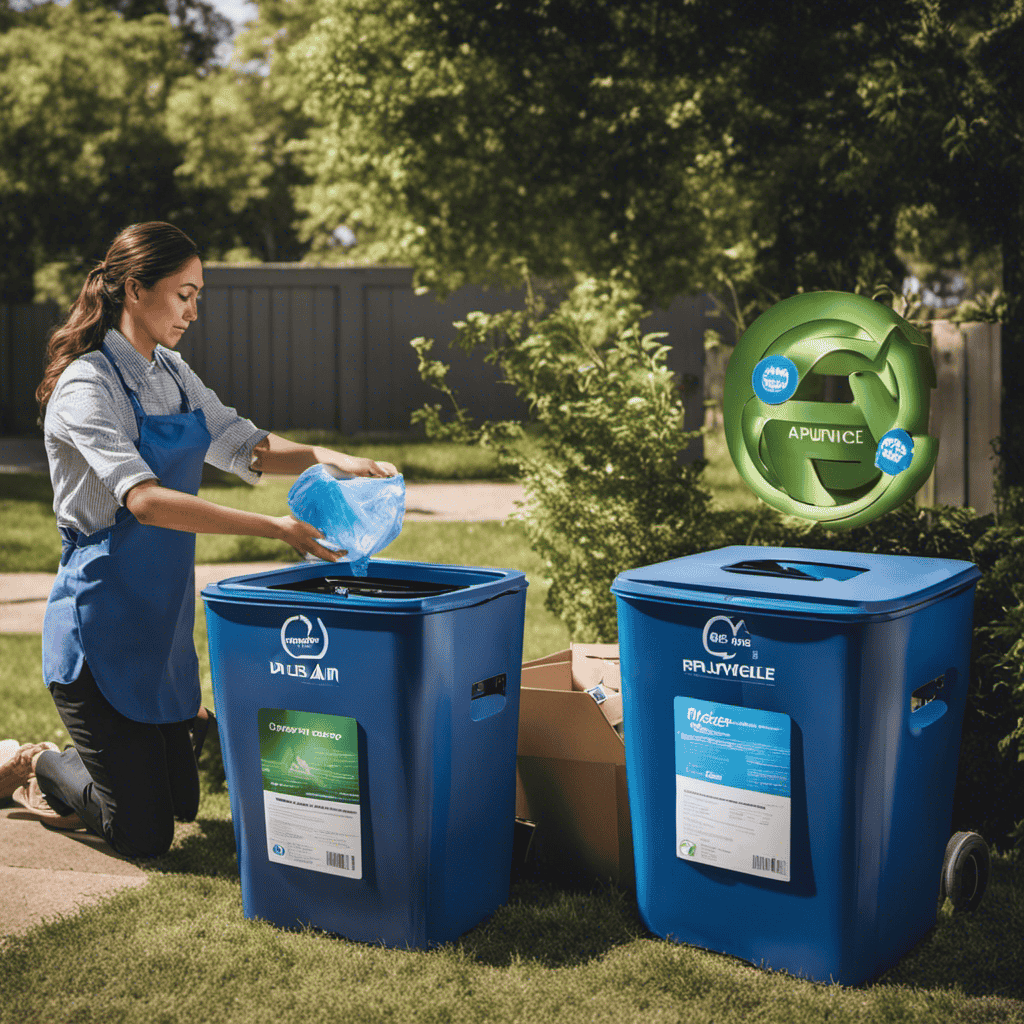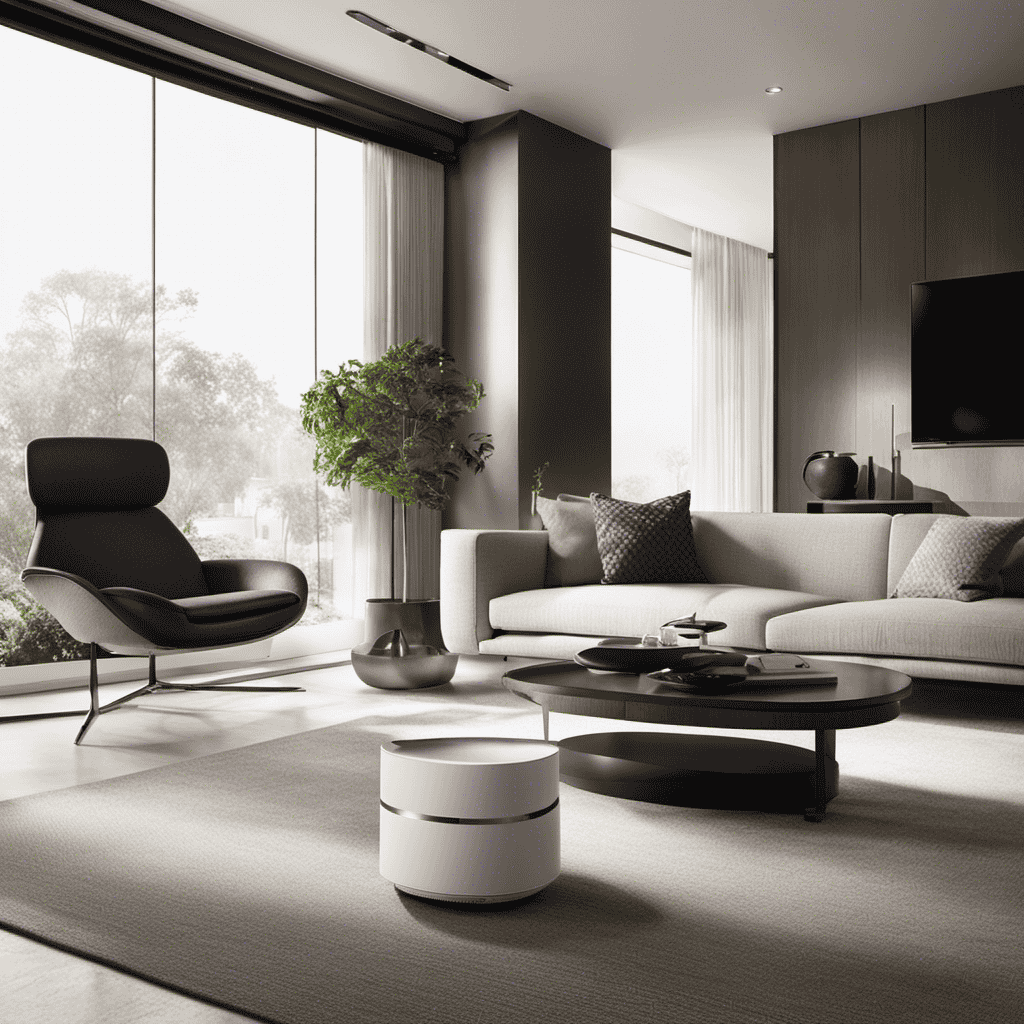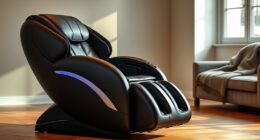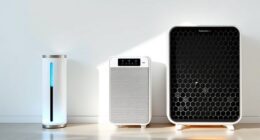Were you aware that indoor air can be up to five times more polluted than outdoor air? Due to the rising concern for air quality, a growing number of individuals are opting for air purifiers to enhance the quality of the air they breathe.
But how do you know if your air purifier is actually working effectively? In this article, I will guide you through the process of testing your air purifier, including evaluating its efficiency ratings, testing its CADR, assessing its filtration system, and much more.
Let’s get started!
Key Takeaways
- Look for the CADR (Clean Air Delivery Rate) label on the packaging to understand how well the air purifier removes airborne pollutants.
- Use a particle counter to measure particle count before and after using the purifier to evaluate its effectiveness in removing allergens.
- Conduct tests using a particle counter and flow meter to assess the filtration system’s efficiency in capturing particles.
- Consider noise reduction capabilities and customize noise levels according to preferences for a peaceful atmosphere.
Understanding Air Purifier Efficiency Ratings
To understand air purifier efficiency ratings, you’ll need to look for the CADR (Clean Air Delivery Rate) label on the packaging. This rating is crucial as it tells you how well the air purifier can remove airborne pollutants from your indoor space.
Over the years, air purifier technology advancements have greatly improved the efficiency of these devices. Today, you can find air purifiers equipped with advanced filters, such as HEPA filters, which effectively capture even the smallest particles. Additionally, some models even come with smart sensors that detect the air quality and adjust the purification settings accordingly.
However, it’s important to note that air purifier maintenance plays a significant role in maintaining its efficiency. Regularly cleaning and replacing filters, as well as keeping the unit free from dust and debris, ensures optimal performance and longevity.
Testing Air Purifier’s CADR (Clean Air Delivery Rate
The CADR (Clean Air Delivery Rate) of an air purifier measures its efficiency in delivering clean air. It is an important factor to consider when choosing an air purifier as it determines how quickly the device can remove allergens and pollutants from the air.
In addition to CADR, it is also important to consider the power consumption of the air purifier. A higher CADR usually means a higher power consumption, so it’s essential to find a balance between effectiveness and energy efficiency.
To measure the air purifier’s effectiveness in removing allergens, you can use a particle counter to measure the number of particles in the air before and after using the purifier. This will give you a clear indication of how well the purifier is working to improve the air quality in your space.
Evaluating Air Purifier’s Filtration System
When it comes to evaluating the effectiveness of an air purifier’s filtration system, two key points to consider are the filter effectiveness measurement and the air quality improvement.
The filter effectiveness measurement refers to how well the filter is able to capture and remove particles from the air, such as dust, pollen, and pet dander. This measurement is typically expressed as a percentage, with higher percentages indicating a more effective filter.
Improving air quality is the ultimate goal of using an air purifier, as it helps to remove pollutants and allergens from the air, creating a healthier living environment.
Filter Effectiveness Measurement
You can measure the effectiveness of your air purifier’s filters by conducting a simple test at home. To evaluate the airflow measurement and particle size analysis, you will need a particle counter and a flow meter.
Start by placing the particle counter near the air purifier’s outlet and set it to measure the number of particles in the air. Next, use the flow meter to measure the airflow rate of the purifier.
By comparing the particle count and airflow rate, you can determine the efficiency of your air purifier’s filters. Higher particle counts indicate poorer filtration, while lower particle counts suggest better filtration. Similarly, a higher airflow rate indicates better filter performance, as more air is being processed through the filters.
Regularly conducting these tests will help you ensure that your air purifier is effectively removing particles from the air and maintaining clean indoor air quality.
Air Quality Improvement
Improving indoor air quality is essential for creating a healthier living environment. One effective way to achieve this is by using an air purifier.
Air purifiers work by removing harmful particles and pollutants from the air, providing numerous benefits for our health. Not only do they reduce allergens like dust and pet dander, but they also help eliminate odors and harmful chemicals.
To ensure that your air purifier continues to function optimally, it is important to follow proper maintenance tips. Regularly cleaning or replacing the filters, cleaning the unit itself, and keeping the surrounding area free from dust and debris are essential steps.
By maintaining your air purifier, you can ensure that it continues to provide clean and fresh air for a healthier living space.
Now, let’s move on to assessing the noise levels of your air purifier.
Assessing Air Purifier’s Noise Levels
To accurately assess your air purifier’s noise levels, simply listen closely and note any excessive or disruptive sounds. A quiet air purifier is essential for maintaining a peaceful atmosphere in your home or office. When evaluating the noise levels of your air purifier, consider the following:
-
Power Consumption: Assess the power consumption of your air purifier to determine its energy efficiency. Look for models with lower power consumption to save on electricity bills.
-
Noise Reduction Capabilities: Analyze the air purifier’s noise reduction capabilities by comparing the decibel levels during operation. Look for features like noise-canceling technology or adjustable fan speeds to customize the noise level according to your preferences.
By carefully considering the power consumption and noise reduction capabilities of your air purifier, you can ensure a peaceful and efficient air purification experience.
Now, let’s move on to measuring the air purifier’s coverage area to determine its effectiveness in purifying the air in your space.
Measuring Air Purifier’s Coverage Area
When it comes to choosing an air purifier, understanding the effective purifier size, coverage versus room size, and optimum air circulation are crucial factors to consider.
The effective purifier size refers to the capacity of the purifier to effectively clean the air in a given space. It is important to ensure that the purifier is sized appropriately for the room to achieve optimal air quality.
Additionally, considering the coverage versus room size is essential as it determines how efficiently the purifier can clean the air in a specific area.
Lastly, understanding the importance of optimum air circulation helps in positioning the purifier strategically for maximum effectiveness.
Effective Purifier Size
The most effective purifier size is determined by the square footage of the room. When it comes to air purifier placement, it is crucial to choose a purifier that is appropriate for the size of the room. Here are a couple of things to consider:
- Purifier effectiveness:
- A purifier that is too small for the room will not be able to effectively clean the air, leaving pollutants behind.
- On the other hand, a purifier that is too large for the room may consume more energy than necessary, resulting in higher energy bills.
To ensure maximum efficiency, it is important to find the right balance between coverage and room size.
In the next section, we will discuss the concept of coverage versus room size and how to determine the ideal purifier size for your space.
Coverage Vs Room Size
Now that we have discussed the effective size of an air purifier, let’s delve into the concept of coverage versus room size.
When it comes to air purifier effectiveness and performance, understanding the relationship between coverage and room size is crucial.
Coverage refers to the area that an air purifier can effectively clean, while room size refers to the dimensions of the space you want to purify.
It is important to choose an air purifier with a coverage area that matches or exceeds the size of your room. If the coverage is too small, the air purifier may struggle to effectively clean the entire space.
On the other hand, if the coverage is too large, the air purifier may not be able to efficiently remove pollutants from the air.
Therefore, considering both coverage and room size is essential for optimal air purifier performance.
Optimum Air Circulation?
To achieve the best air purification results, it’s crucial to ensure optimum air circulation throughout the room. Proper air circulation allows the air purifier to effectively filter and clean the air, improving the overall air quality.
Here are two important factors to consider when it comes to optimum air circulation:
-
Positioning of the air purifier:
-
Place the air purifier in an area where it can draw in air from all directions.
-
Avoid placing it near walls or furniture that may obstruct airflow.
-
Room layout and furniture arrangement:
-
Arrange furniture in a way that allows for unrestricted airflow.
-
Avoid blocking air vents or placing obstacles in front of the air purifier.
Verifying Air Purifier’s Energy Consumption
You should check if your air purifier is using excessive energy by monitoring its power consumption. This is an important step in ensuring the efficiency and cost-effectiveness of your air purifier. To help you understand the energy consumption of different air purifier models, I have created a table below:
| Air Purifier Model | Power Consumption (Watts) |
|---|---|
| Model A | 30 |
| Model B | 50 |
| Model C | 20 |
Checking Air Purifier’s Maintenance Requirements
Regular maintenance is crucial for ensuring the longevity and effectiveness of an air purifier. To keep your air purifier running smoothly, it’s important to follow a maintenance schedule and replace filters as needed. Here are some key points to consider:
-
Maintenance Schedule: Create a regular maintenance schedule to ensure timely filter replacements and overall upkeep of your air purifier. Set reminders on your calendar to check and clean the filters every 3 to 6 months. Follow the manufacturer’s guidelines for replacing filters based on usage and air quality conditions.
-
Filter Replacement: Replace filters as recommended by the manufacturer to maintain optimal performance. Check the filter indicator or refer to the user manual for specific instructions on when to replace the filters. Use genuine replacement filters to ensure compatibility and effectiveness.
Testing Air Purifier’s Odor Removal Capability
Now, let’s dive into seeing how well the air purifier tackles those pesky odors. When it comes to testing an air purifier’s odor removal capability, there are a few key factors to consider. First, you need to determine the room size suitability of the purifier. This can be done by referring to the manufacturer’s specifications or using a room size calculator. Additionally, you will need air purifier testing equipment such as a smoke generator or odor meter to accurately measure the effectiveness of the purifier in removing odors. By conducting tests with different odors and varying levels of concentration, you can assess the purifier’s performance and determine if it meets your specific needs.
| Factors to Consider | Testing Equipment |
|---|---|
| Room size suitability | Manufacturer’s specifications or room size calculator |
| Odor removal capability | Smoke generator or odor meter |
Testing the air purifier’s odor removal capability is essential to ensure that it effectively eliminates unpleasant smells from your living space. By following the steps mentioned above and using the appropriate testing equipment, you can make an informed decision when selecting an air purifier that meets your needs.
Evaluating Air Purifier’s Performance in Different Room Sizes
To evaluate the performance of an air purifier in different room sizes, it’s important to consider factors such as the purifier’s coverage area and the specific dimensions of the rooms you plan to use it in. The size of the room plays a significant role in determining the effectiveness of an air purifier.
Here are some key points to consider:
-
Coverage area: Check the manufacturer’s specifications to see if the air purifier is suitable for the size of your room. A purifier with a larger coverage area will be able to clean the air more efficiently.
-
Room dimensions: Consider the height, width, and length of your room. These factors can affect the air circulation and the purifier’s ability to filter the entire space effectively.
An air purifier can have a significant impact on allergies and respiratory health. By choosing the right purifier for your room size, you can ensure that it effectively removes allergens and pollutants, improving the air quality and providing relief for allergy sufferers.
Additionally, a properly sized air purifier can help reduce respiratory symptoms and promote overall respiratory health.
Frequently Asked Questions
How Often Should I Replace the Filters in My Air Purifier?
I replace the filters in my air purifier every 6 to 12 months, depending on usage. Signs that filters need to be replaced include reduced airflow, strange odors, and a decrease in air quality.
Can I Use My Air Purifier in a Room With Pets?
Yes, you can use your air purifier in a room with pets. It helps to reduce pet dander and allergens in the air. Make sure to check the noise levels of the purifier to ensure it doesn’t disturb your furry friends.
Can Air Purifiers Remove Allergens Like Pollen and Dust Mites?
Yes, air purifiers can remove allergens like pollen and dust mites. They use filters to capture these particles, improving indoor air quality. Unlike humidifiers, air purifiers do not add moisture. They also help eliminate odors.
What Is the Recommended Placement for an Air Purifier in a Room?
The recommended placement for an air purifier in a room depends on factors like room size, layout, and airflow. The ideal location is usually near the center of the room for optimal air circulation.
How Long Does It Take for an Air Purifier to Effectively Clean the Air in a Room?
It usually takes a few hours for an air purifier to effectively clean the air in a room. To measure air quality, consider factors like CADR, filter type, and room size when purchasing an air purifier.
Is Testing the Coil on a Living Air Purifier Similar to Testing Other Air Purifiers?
When testing the coil on a living air purifier, it is similar to testing other air purifiers in some aspects. Both require checking for proper functioning and potential malfunctions. However, the specific steps and methods for testing the coil on a living air purifier may differ from those used for other air purifiers.
Conclusion
In conclusion, testing your air purifier is essential in ensuring the quality of the air you breathe.
Just like a knight with a shield, the air purifier acts as a protector, defending you against the invisible enemies that lurk in the air.
By understanding its efficiency ratings, evaluating its filtration system, and assessing its noise levels, you can determine its effectiveness.
Additionally, measuring its coverage area, verifying its energy consumption, and checking its maintenance requirements will ensure its longevity.
Lastly, testing its odor removal capability and performance in different room sizes will guarantee a breath of fresh air in any space.
